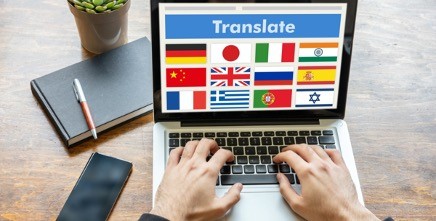Introduction
Translating is an essential skill in many fields. Translate from French to Spanish from official documents to academic texts and everyday conversations, having an accurate translation is fundamental. Although both languages share similarities, they also have differences that can make translation challenging.
Today, there are tools and strategies that simplify this process. However, translating word for word is not enough. To achieve a good result, it is important to understand the context, avoid common mistakes, and apply the right techniques. In this article, we will explore the best methods for successful translation.

Translate from French to Spanish: Strategies
Understanding Both Languages Well
French and Spanish are Romance languages, which means they have similar structures. However, they also have grammatical and lexical differences. For example, verb tenses and pronoun placement can change the meaning of a sentence if not translated correctly.
Using Translation Tools Wisely
There are many automatic translation tools, such as Google Translate and DeepL. While they can be useful for getting a general idea of a text, they do not always provide accurate results. Therefore, it is advisable to manually review and correct the translation.
Additionally, computer-assisted translation (CAT) tools, such as SDL Trados and MemoQ, can improve consistency in long texts. These tools help manage glossaries and translation memories to maintain terminological coherence.
Adapting Expressions and Idioms
Each language has its own idiomatic expressions. Translating them literally can cause confusion. For example, the French phrase “avoir le cafard” translates to “feeling down” in Spanish, not “having the cockroach.”
To avoid mistakes, it is important to understand the real meaning of expressions and find their equivalent in Spanish. In some cases, rephrasing the sentence is the best way to ensure clarity.
Checking Grammar and Spelling
A good translator focuses not only on meaning but also on grammatical accuracy. Reviewing spelling and syntax ensures a clear and understandable translation. Tools like Grammarly or LanguageTool can help detect errors.
Additionally, reading the translated text aloud helps identify unnatural or confusing phrases. This simple exercise improves fluency and helps correct possible writing issues.
Considering Context and Tone
Words can change meaning depending on the context. Before translating, it is essential to analyze the type of text and the target audience. A technical document requires more precision than an informal message.
Maintaining the original tone of the text is also important. If it is formal, the translation should reflect that level of seriousness. On the other hand, if the tone is more relaxed, the Spanish version should retain that natural feel.
Translate from French to Spanish: Tools
Google Translate
This is a quick and easy-to-use option. Although not always precise, it can be helpful for understanding the general meaning of a text.
DeepL
This translator uses artificial intelligence and often provides better results than other tools. Its ability to interpret context makes it an excellent choice for complex texts.
Linguee
It combines a dictionary with a translation database. It allows users to see how certain phrases have been translated in different contexts, helping to find the most suitable option.
Reverso Context
This tool offers translation examples in various scenarios. It is very useful for learning common phrases and improving language comprehension.
Antidote
An advanced spell checker that helps improve grammar and writing style. It can be an excellent complementary tool for translators.
Final Tips to Improve Translation
- Read the original text multiple times before translating.
- Do not rely entirely on automatic tools.
- Consult dictionaries and reliable sources.
- Ask native speakers for help if needed.
- Practice frequently to improve accuracy.
- Always review the final translation to avoid mistakes.
Conclusion
Translating from French to Spanish can be challenging, but with the right tools and techniques, it is possible to achieve high-quality translations. The most important thing is to fully understand the context, avoid literal translations, and ensure that the final text is clear and natural.
In an increasingly connected world, mastering translation is a valuable skill. Whether for work, studies, or everyday life, improving in this field can open many doors.
Finally, if you need more information, please visit French Translations: The Key to Global Business Success



